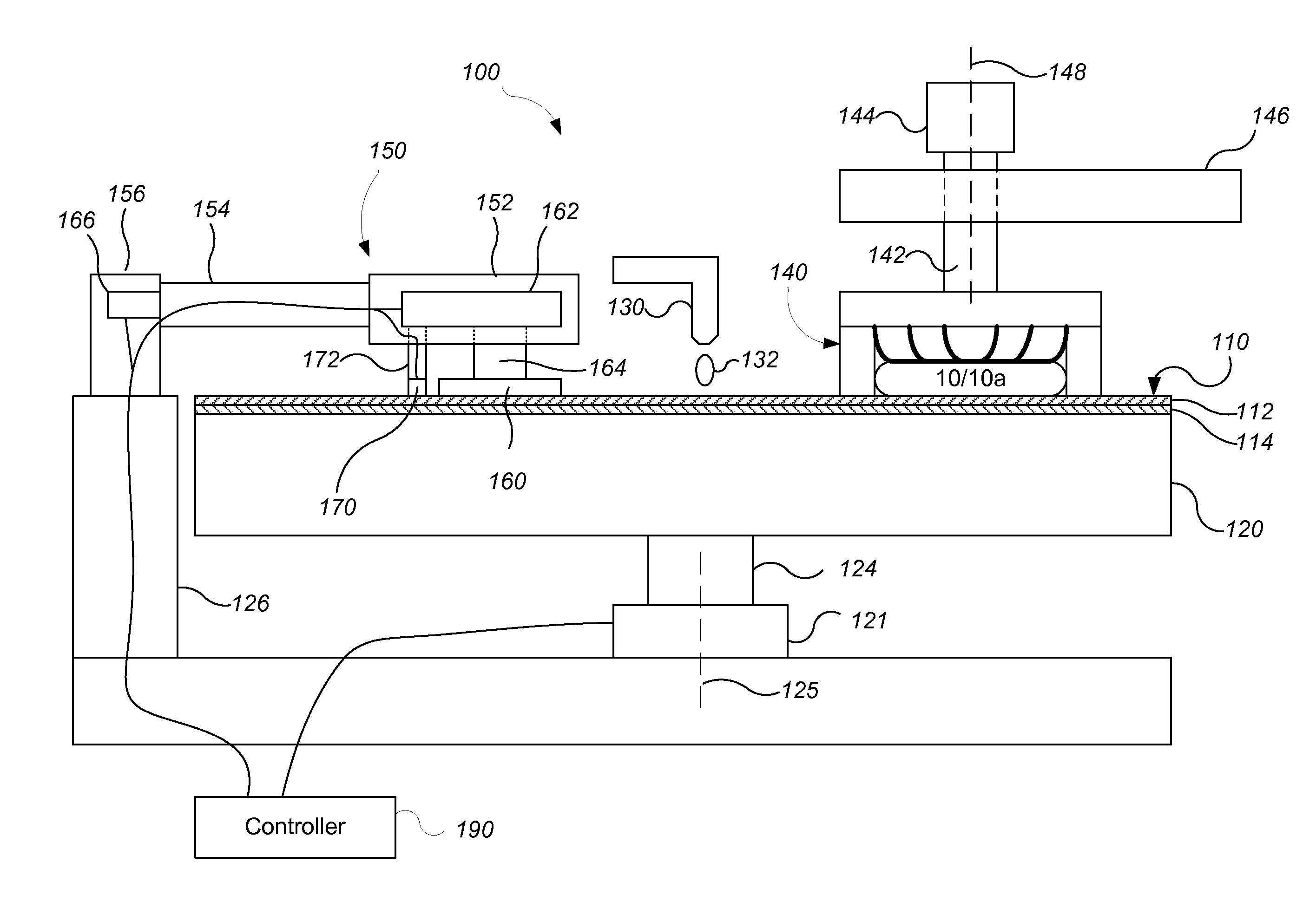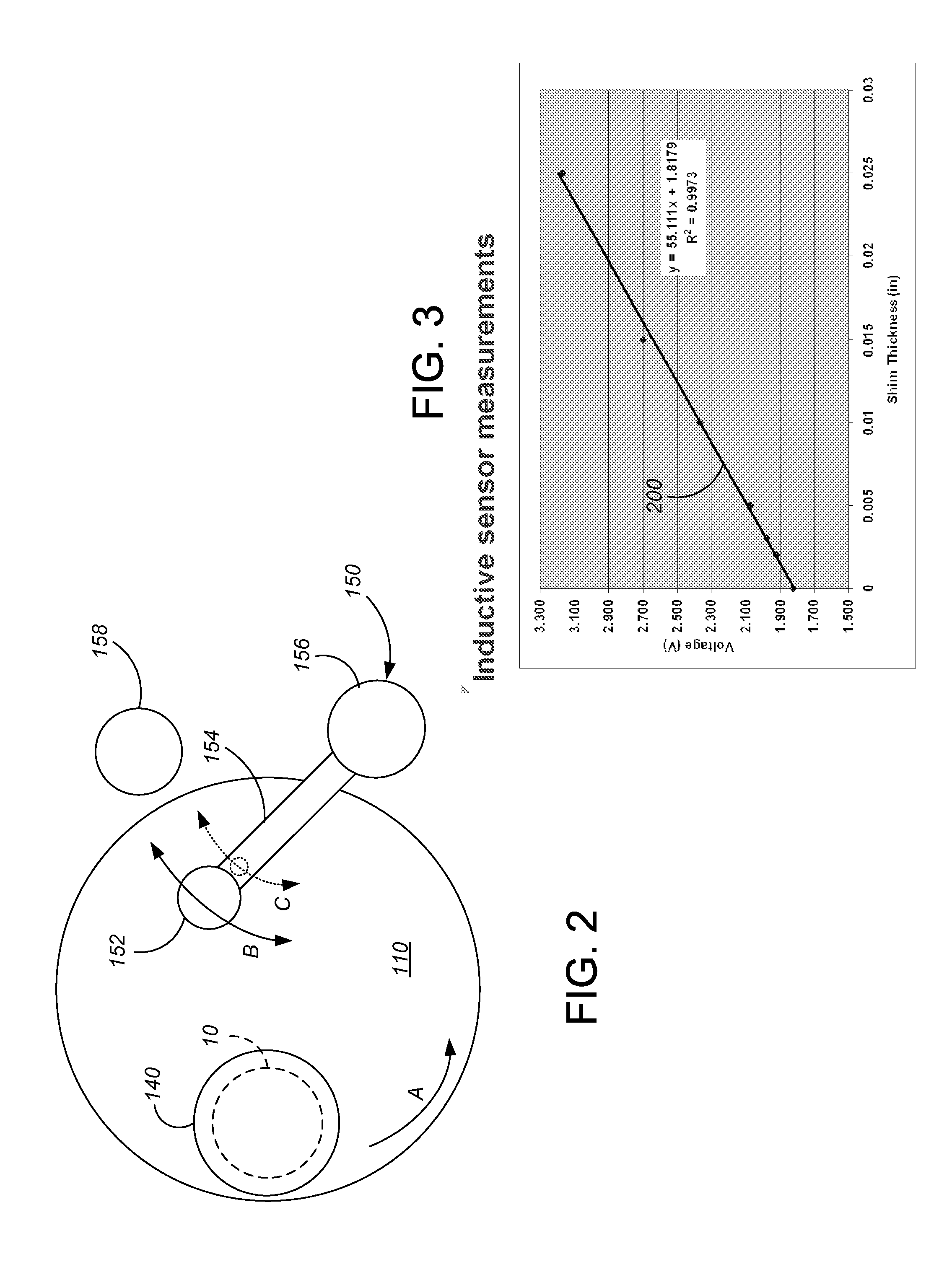Measurement of pad thickness and control of conditioning
- Summary
- Abstract
- Description
- Claims
- Application Information
AI Technical Summary
Benefits of technology
Problems solved by technology
Method used
Image
Examples
Embodiment Construction
[0020]FIG. 1 illustrates an example of a polishing apparatus 100. The polishing apparatus 100 includes a rotatable disk-shaped platen 120 on which a polishing pad 110 is situated. The platen is operable to rotate about an axis 125. For example, a motor 121 can turn a drive shaft 124 to rotate the platen 120. The polishing pad 110 can be detachably secured to the platen 120, for example, by a layer of adhesive. The polishing pad 110 can be a two-layer polishing pad with an outer polishing layer 112 and a softer backing layer 114.
[0021]The polishing apparatus 100 can include a combined slurry / rinse arm 130. During polishing, the arm 130 is operable to dispense a polishing liquid 132, such as a slurry, onto the polishing pad 110. While only one slurry / rinse arm 130 is shown, additional nozzles, such as one or more dedicated slurry arms per carrier head, can be used.
[0022]The polishing apparatus 100 can further include a carrier head 140. The carrier head 140 may be operable to hold a s...
PUM
| Property | Measurement | Unit |
|---|---|---|
| Time | aaaaa | aaaaa |
| Thickness | aaaaa | aaaaa |
| Pressure | aaaaa | aaaaa |
Abstract
Description
Claims
Application Information
 Login to View More
Login to View More - Generate Ideas
- Intellectual Property
- Life Sciences
- Materials
- Tech Scout
- Unparalleled Data Quality
- Higher Quality Content
- 60% Fewer Hallucinations
Browse by: Latest US Patents, China's latest patents, Technical Efficacy Thesaurus, Application Domain, Technology Topic, Popular Technical Reports.
© 2025 PatSnap. All rights reserved.Legal|Privacy policy|Modern Slavery Act Transparency Statement|Sitemap|About US| Contact US: help@patsnap.com



